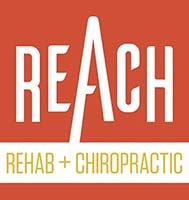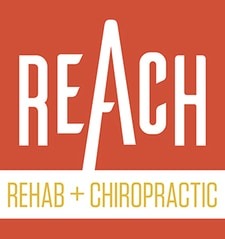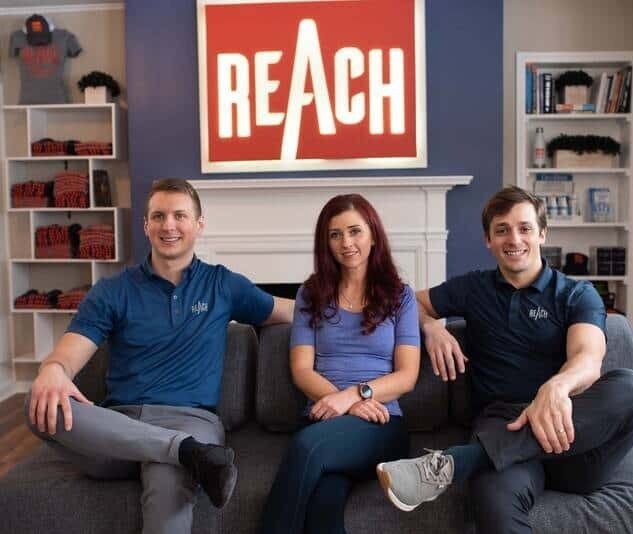
Pain is complex and frustrating.
With customized manual medicine and movement coaching, REACH Rehab + Chiropractic Performance Center takes the guesswork out of healing.
Through an evidence-based and patient-focused approach, we work together to relieve pain as quickly as possible while addressing the underlying cause of the symptoms.
We help athletes, hard workers, and everyday people in the Plymouth community to feel and move better than before. And learn to keep it that way.
Do more than relieve pain, be unstoppable.
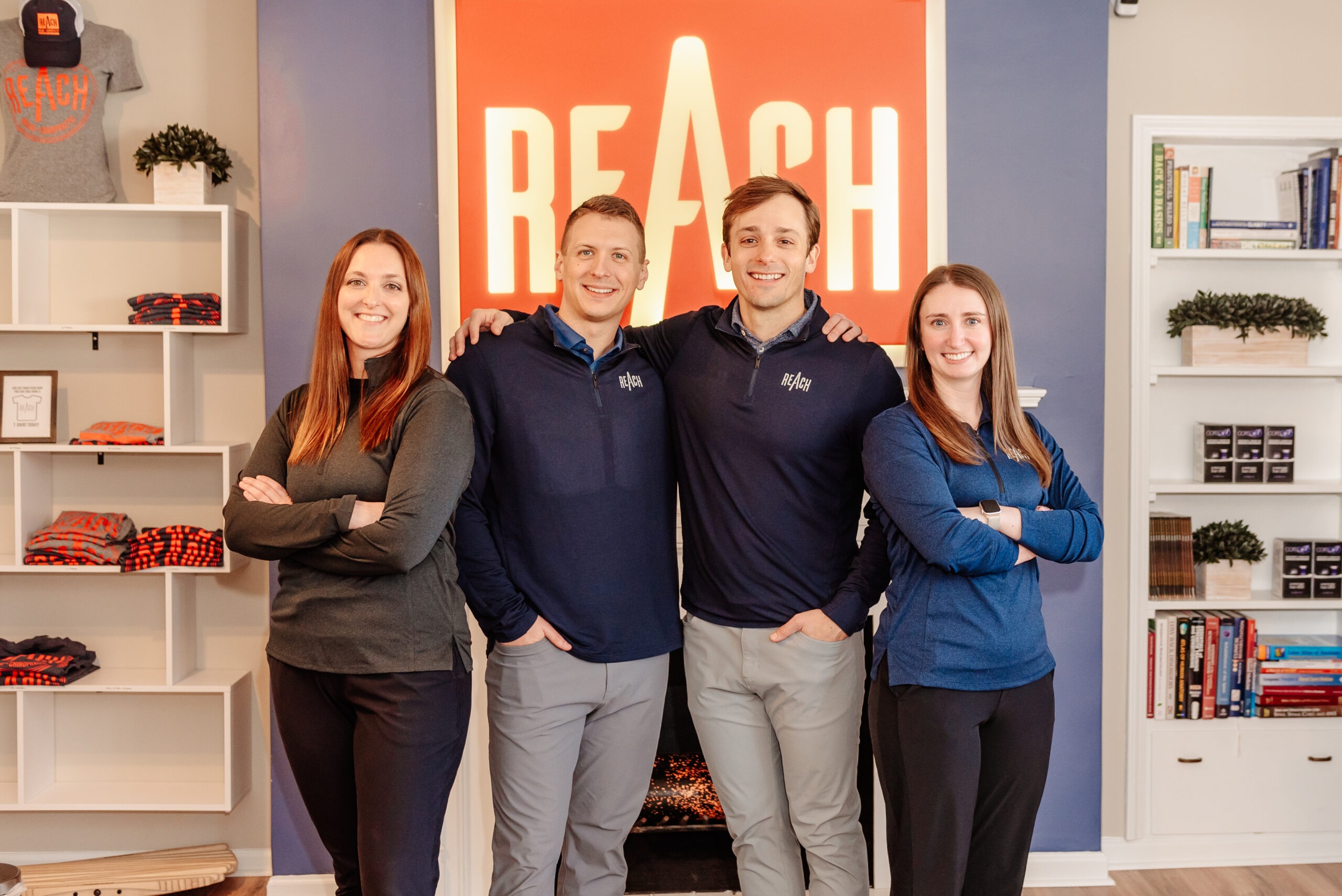
Better than Ever
A Custom Recovery Program Design Around YOU
Conditions Treated
We help patients seeking relief for a variety of medical diagnoses and pain presentations including:
- Post-surgical back pain
- Radiculopathy
- Regional pain syndrome
- Rotator cuff syndrome
- Sacroiliitis
- Sciatica
- Shoulder pain
- Shin splints
- Soft tissue adhesions
- Spinal stenosis
- Sprains and strains
- TMJ disorder
- Torticollis
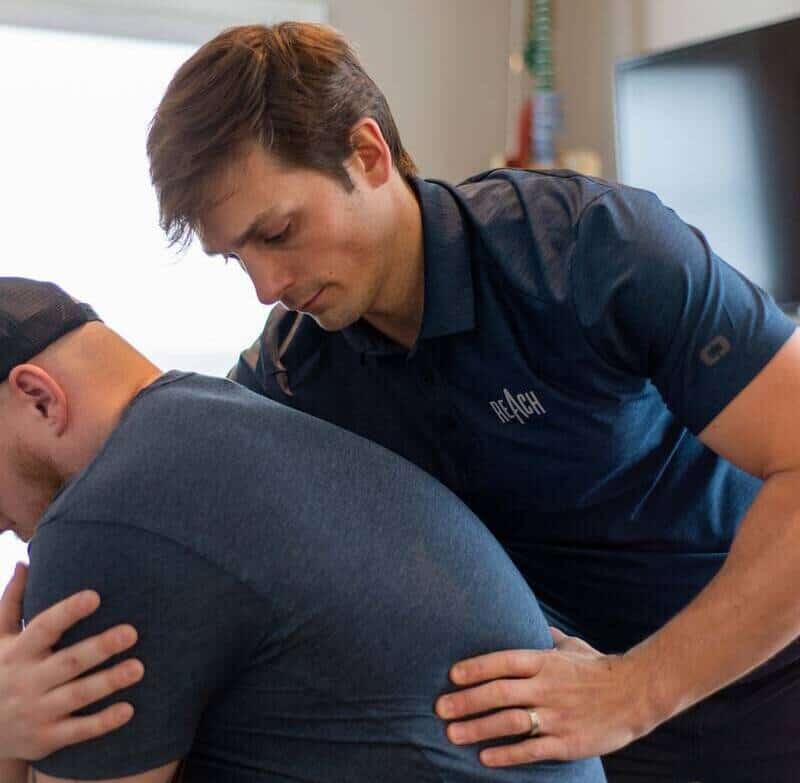
Chiropractic Care
Classic chiropractic doesn’t address why your pain keeps happening: your physical behaviors. So, you have to endlessly keep going back to get “cracked”.
Utilizing a hands-on, holistic approach to relieving muscle, joint, and nerve pain, we customize a recovery plan of targeted treatments with your long-term goals in mind. You take an active role in your care to not only get better but learn how to keep it that way.

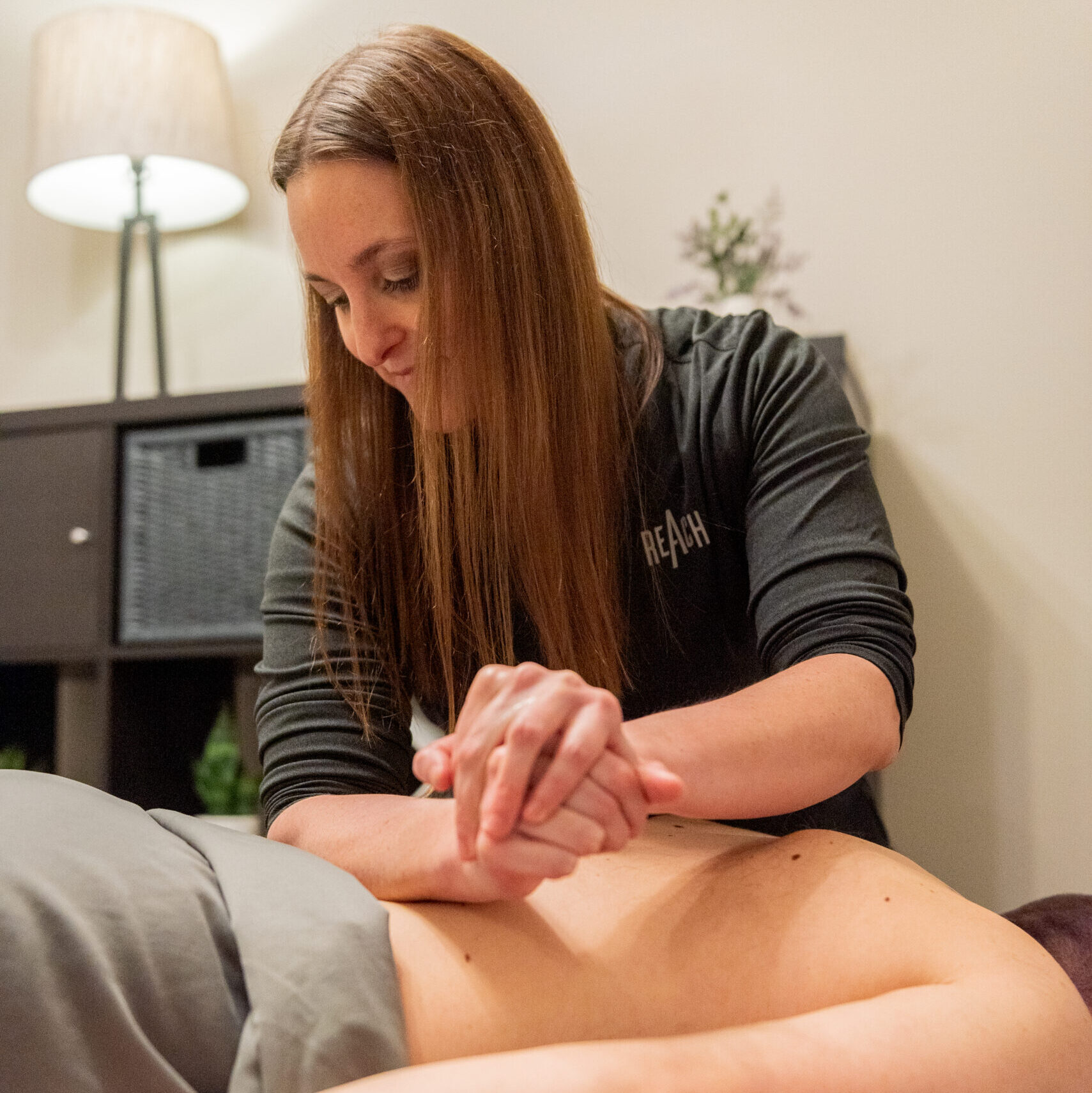
Massage Therapy
Massage feels great, but what if all your pain and tension keep coming back? Goal-oriented bodywork, manual therapies, and massage options create sustainable changes in pain, posture, and flexibility. Hands-on manual work improves range of motion and to “undo” built-up tension, allowing your body to heal. And we teach you how to cement the changes.
By learning how to listen to your body, you’ll understand how to deal with old habits when they pop up, preventing future flare-ups.
Chiropractic Treatment Options
Depending on your condition, we may offer any combination of the following treatments to help you achieve relief and recovery as quickly as possible:
Chiropractic Adjustments
Chiropractic manipulation is used to release restricted joints in both the spine and the extremities.
Chiropractic Adjustments, Motion Palpation Joints often become restricted due to poor posture, improper bio-mechanics, and/or injury. A joint that is restricted leads to excessive motion in nearby joints. This excessive motion leads to degeneration of the joint. Therefore, restoring movement and function in all joints is a preventative procedure for future degeneration and dysfunction as well as golf injuries.
For those patients that prefer a lighter manipulation, we also provide mobilization to the joints to help restore movement and function. This is a low-velocity manual technique that does not provide the audible release (cracking/popping sound).

Dr. Burr uses manipulation and mobilizations as taught by the Motion Palpation Institute, a bio-mechanically sound and evidence-based chiropractic manipulation technique.
McKenzie Method (MDT)
Without a full range of motion and proper use of joints, our backs, necks and joints become stiff and less mobile, leading to pain, greater loss of movement and dysfunction. The McKenzie method is a standardized assessment tool, defining and classifying movement problems and recommending appropriate treatment.
MDT helps to treat conditions such as low back pain, neck pain, herniated discs, radiating leg pain, arm pain/numbness, and sciatica. MDT is also effective at classifying and treating joints of the extremities such as elbows, wrists, knees, ankles, and even the TMJ (jaw).

One of the key components of this method is patient education. This method utilizes education to train the patient on proper posture and ergonomics and provides the patient with exercises to treat their own pain. It is directed toward patient self-treatment methods, therefore making the patient less reliant on the doctor for relief of their symptoms.
Dynamic Neuromuscular Stabilization
Dynamic Neuromuscular Stabilization (DNS) is derived from a technique pioneered by Drs. Vaclav Vojta, a Czechoslovakian neurologist, and Pavel Kolar, PhD, PT. Dr. Vojta developed a unique therapy that was originally intended to treat children with cerebral palsy. Since its inception in the 1960s, it has grown and expanded and is now indicated for a variety of conditions in both the child and the adult.
 Prof. Pavel Kolar further evolved and expanded this technique to make it more dynamic and to yield faster results. The purpose of the technique is to promote proper activation and coordination of the neuromuscular system. This has yielded amazing success in treating pain syndromes as well as various neurological conditions such as cerebral palsy, scoliosis, and stroke cases. While DNS is routinely used in Europe, it has only recently started to gain popularity in the United States.
Prof. Pavel Kolar further evolved and expanded this technique to make it more dynamic and to yield faster results. The purpose of the technique is to promote proper activation and coordination of the neuromuscular system. This has yielded amazing success in treating pain syndromes as well as various neurological conditions such as cerebral palsy, scoliosis, and stroke cases. While DNS is routinely used in Europe, it has only recently started to gain popularity in the United States.
Active Release Techniques (ART®)
Soft tissue techniques are used when a muscle, tendon, or ligament is overly tight, painful, or does not function properly.
 ART is a movement-based manual therapy technique that addresses muscles, tendons, ligaments, fascia and nerves. It involves breaking up adhesions in the soft tissues by having the patient go through various motions while the doctor applies a very specific pressure to the area being treated. It has been proven to be highly effective in treating many repetitive overuse injuries such as IT band syndrome, carpal tunnel syndrome, low back pain, golfer’s elbow, tennis elbow, shin splints and even headaches.
ART is a movement-based manual therapy technique that addresses muscles, tendons, ligaments, fascia and nerves. It involves breaking up adhesions in the soft tissues by having the patient go through various motions while the doctor applies a very specific pressure to the area being treated. It has been proven to be highly effective in treating many repetitive overuse injuries such as IT band syndrome, carpal tunnel syndrome, low back pain, golfer’s elbow, tennis elbow, shin splints and even headaches.
Functional Performance Rehab
Functional Performance Rehab consists of a variety of corrective and performance exercises with the goal of improving your physical movement, function, and performance. Exercises are custom-tailored based upon the findings of your functional assessment & movement screen.
Once movement dysfunction(s) have been identified from our thorough evaluation and movement assessment, a custom-tailored corrective and performance exercise program will be implemented with the goal of returning the patient/client to their regular activities of daily living while maintaining a pain-free state.
When a particular muscle is not doing its job correctly (inhibition), other structures have to pick up the slack causing them to become over-stressed. This is called altered motor control and can be du toe many factors including frequent sitting, sedentary lifestyle, poor postural habits and previous injury. This causes undue tension in the aforementioned over-stressed muscles, ultimately leading to pain and injury. Corrective exercises are designed to curb altered motor control by stimulating the inhibited muscle(s) in functional patterns which translates to more efficient movement in sport and everyday activities; thus, increasing performance while decreasing the risk for injury.
Instrument Assisted Soft Tissue Mobilization ("Graston")
Instrument assisted soft tissue mobilization (IASTM) is an advanced manual technique where the therapist is able to effectively address myofacial or soft tissue dysfunctions (i.e. tight, stringy muscles) with the assistance of a contoured instrument.
The instruments give clinicians a mechanical advantage by reducing stress on the hands, magnifying abnormalities (e.g. restrictions, scars, adhesions), and focusing forces through a small area with less friction than using the thumb or fingers.
The goal of treatment is to stimulate an inflammatory healing response – increasing blood flow and stimulating collagen production promotes adequate remodeling and healing of soft tissue structures. Ultimately, reducing overall treatment time and allowing faster recovery.
Massage Therapy
There’s no question massage therapy has profound benefits. Less stress, decreased pain, easier movement — what’s not to love? However, not all massage therapy is the same.
Our skills range from relaxation to rehabilitation and pain management. We customize each session to meet your unique needs, where every session is specific and intentional. With advanced training in pain science, body awareness, joint biomechanics, and relaxation techniques, we utilize a science-based approach to ensure the best outcomes to achieve your goals.
Rock Tape Kinesiology Taping
Rolfing® Structural Integration
Rolfing® Structural Integration is an effective hands-on therapy designed to treat the cause of your pain, not just the symptoms. This hands-on bodywork uses intelligent touch to release various layers of tissue restrictions, revitalizing your entire body allowing for a deep sustainable change in posture, health, and movement.
Rolfing is a series of ten bodywork sessions that are designed around you and your goals. We are all made up of life experiences, injuries, stressors, ideas, and habits – which, combined give us physical individuality. Rolfing provides a way to investigate your whole body’s habitual patterns that have lead to tension and pain. Each session works with a different area of your body, allowing for cumulative learning and full-body fluid movement.
Rolfing is a great treatment option for all ages, elite athletes, weekend warriors, and even when injured. Common results are unrestricted free movement, increased body awareness, less pain, improved posture, and better flexibility.
Rolfing is unique because it isn’t a technique, it’s a philosophy. By honoring your natural instinct to heal and working together to find your unique restrictions and habitual patterns, your body learns to better regulate itself meaning decreased pain, and increased adaptability to life’s stressors.
Titleist Golf Assessment
Titleist Performance based golf specific injury assessment is designed to alleviate pain and increase player performance through a deep understanding of how the body functions during the golf swing.
Integrative Neuro Dry Needling (IDN)
Dry Needling is a technique used by practitioners to treat muscular pain and movement dysfunction. The technique uses a “dry” needle — a very thin filament without medication or injection — inserted through the skin and into the targeted muscle(s). Typically, the needle is inserted into an area of soft tissue dysfunction called a, “trigger point.” Thus, dry needling is often referred to as trigger point dry needling and intramuscular manual therapy.
A trigger point is a taut band of skeletal muscle tissue within a muscle. Trigger points are often identified by touch, sensitive to the touch, and cause pain in other parts of the body, i.e., pain referral.
IDN, specifically, uses a neurology-based model to identify and treat musculoskeletal and neuroanatomical relationships that exists between regions of the entire body. In simple terms, the approach is about the assessment and treatment of the body as a whole as opposed to one local area such as a trigger point. Our body functions as a system, not as individual pieces. Plain and simple, you get better results by treating the system, not parts.
Dry needling is not acupuncture. Acupuncture, like dry needling, is a practice associated with inserting needles into the body; however, it’s based on Chinese medicine. Dry needling is based on modern Western medicine principles and administered primarily as a musculoskeletal therapy supported by research.
Dry needling is used most effectively as an adjunct therapy to a treatment and rehabilitation plan, not a standalone therapy.
Dr. Burr administers utilizes the Integrative Dry Needling (IDN) approach based on a thorough assessment and Physician supervision.
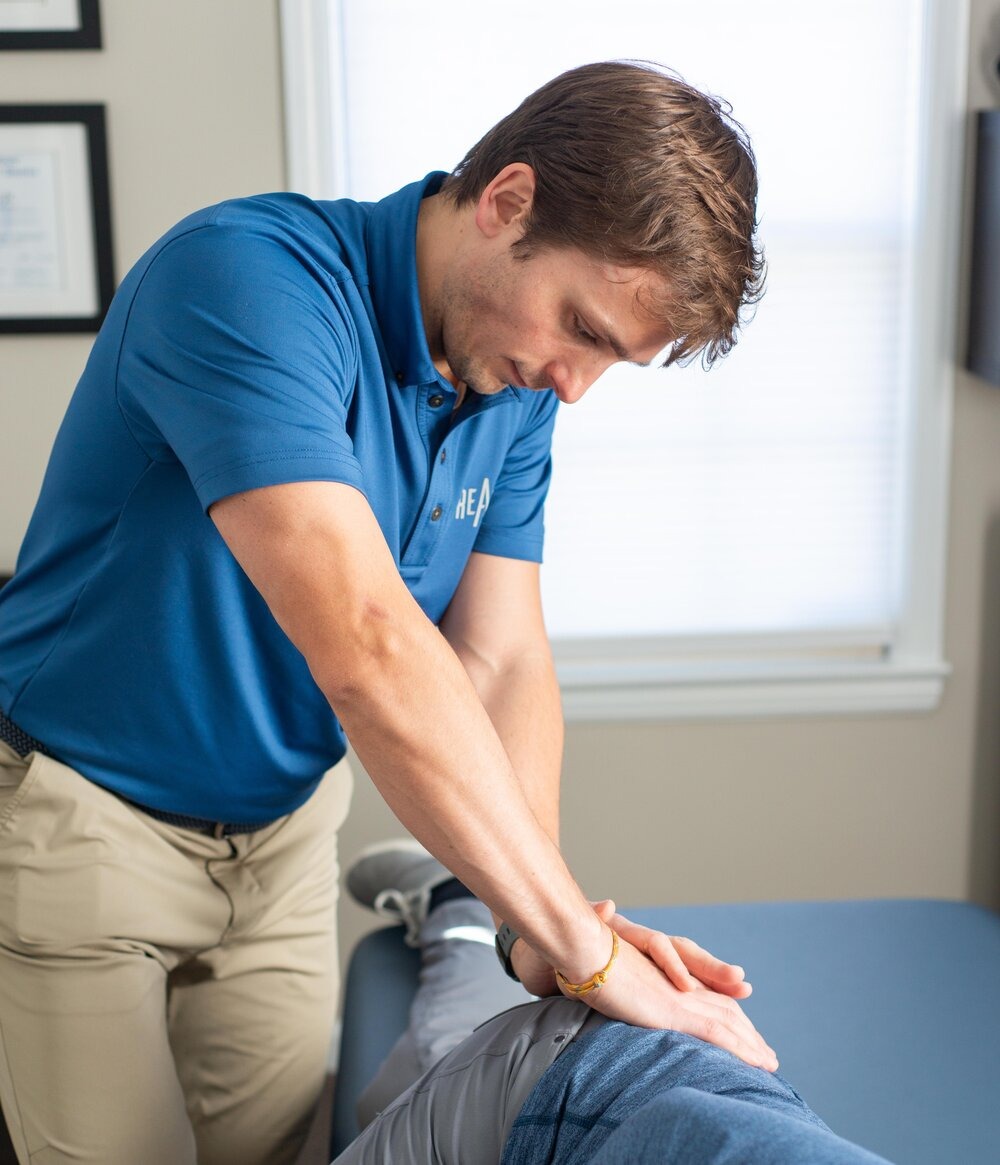
Second Opinion?
Have you bounced around from office to office hoping to be “fixed” or “healed,” frustrated with the results, and you surmise it’s something you’ll just have to live with?
If your answer is “yes,” then don’t lose hope because we can help.
We help you successfully resolve most muscle and joint complaints regardless of previous diagnosis and imaging studies.
Our assessment process allows us to quickly figure out whether we can help you or not within a visit or two. If we believe we cannot help you directly, we can at least help you indirectly by referring you to the correct provider so you don’t get stuck in the healthcare limbo—we’ll always advocate for you.
If we believe we’re not the right provider for your care and treatment goals, there is absolutely NO obligation to begin treatment.
Call Us

